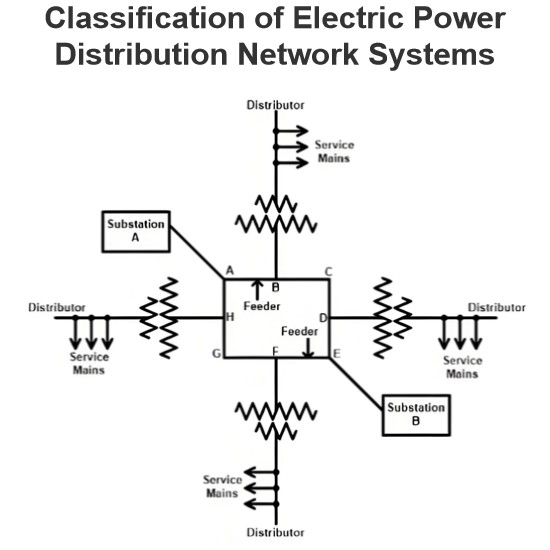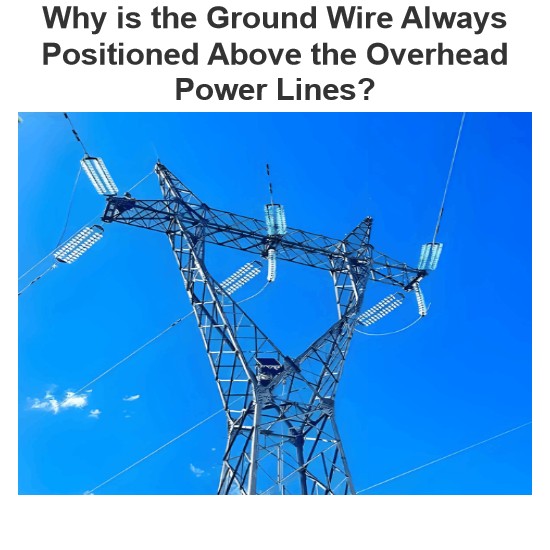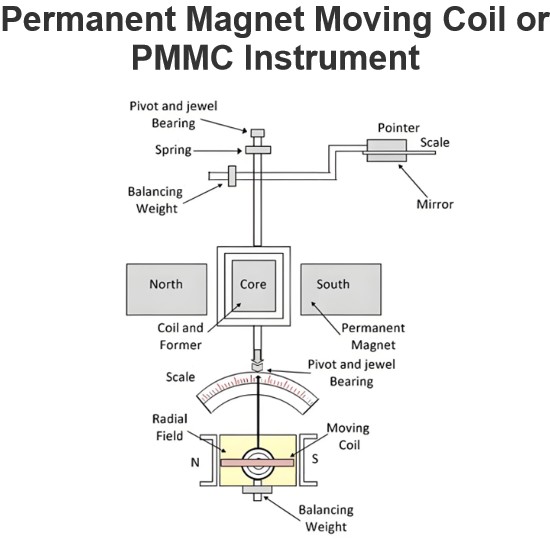A stationary generator must never be connected to live busbars, as the induced electromotive force (EMF) is zero at standstill, which would cause a short circuit. The synchronization procedure and the equipment used for checking it are identical whether one alternator is to be connected in parallel with another alternator or an alternator is to be connected to an infinite bus.
Synchronisation via Synchronising Lamps
A set of three synchronizing lamps can be employed to verify the conditions for paralleling or synchronizing an incoming machine with another. The dark lamp method—used in conjunction with a voltmeter for synchronization—is illustrated below. This approach is suitable for low-power machines.
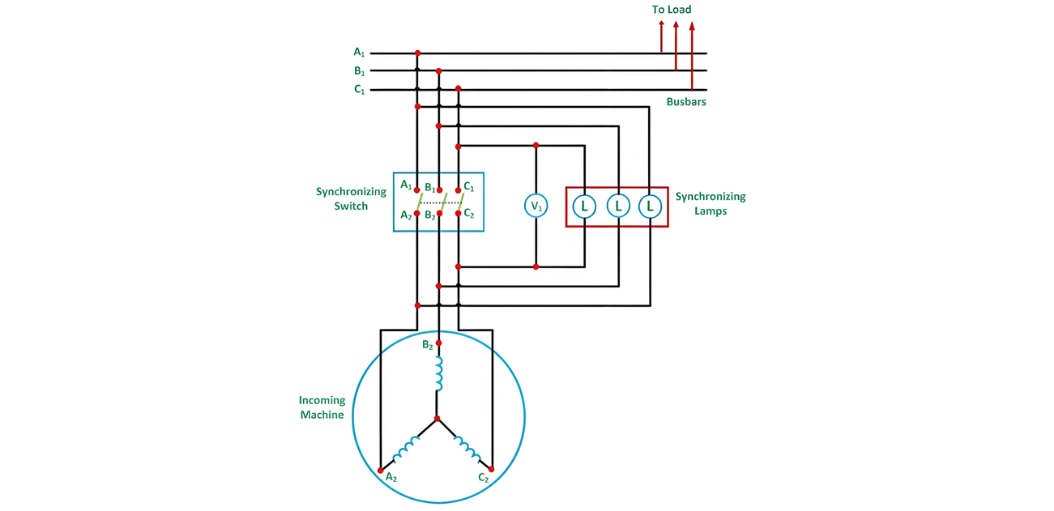
Synchronization Process Using Synchronizing Lamps
- Prime Mover and Voltage Adjustment
- Start the prime mover of the incoming machine and accelerate it to near its rated speed.
- Adjust the field current of the incoming machine until its output voltage matches the bus voltage.
- Frequency and Phase Detection
- The three synchronizing lamps will flicker at a rate proportional to the frequency difference between the incoming machine and the bus.
- Phase Sequence Check: If all lamps glow and dim simultaneously, the phase connections are correct. If not, the phase sequence is misaligned.
- Corrective Actions and Switch Closure
- To rectify phase sequence, interchange any two line leads of the incoming machine.
- Fine-tune the incoming machine’s frequency until the lamps flicker at a rate of less than one dark period per second.
- After final voltage adjustment, close the synchronizing switch at the midpoint of the dark period to minimize voltage discrepancy.
Advantages of the Dark Lamp Method
- Cost-efficient compared to other synchronization techniques.
- Enables straightforward verification of correct phase sequence.
Disadvantages of the Dark Lamp Method
- Lamps appear dark at approximately 50% of their rated voltage, risking switch closure during residual phase differences.
- Frequent voltage fluctuations may cause filament burnout.
- Flicker behavior does not indicate whether the incoming frequency is higher or lower than the bus frequency.
Three Bright Lamp Method
- Connection Scheme: Lamps are cross-connected across phases (e.g., A1-B2, B1-C2, C1-A2).
- Synchronization Cue: If all lamps brighten and dim in unison, the phase sequence is correct.
- Optimal Switching: Close the switch at the peak of the bright period.
Two Bright One Dark Lamp Method
- Connection Configuration: One lamp is connected between corresponding phases (e.g., A1-A2), while the other two are cross-connected (e.g., B1-C2, C1-B2), as illustrated below.
- Phase Indication: The correct phase sequence is confirmed when one lamp remains dark while the other two alternate between brightness and darkness.
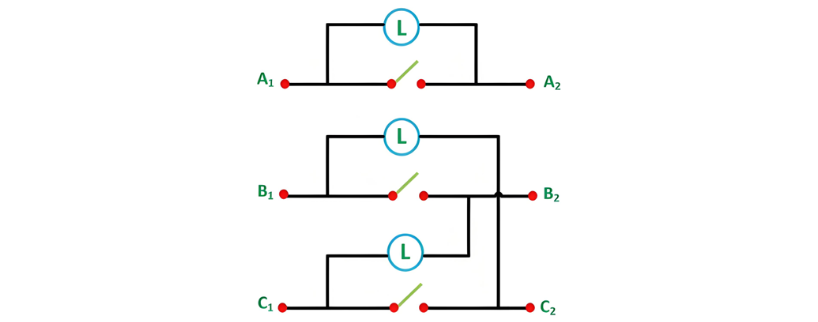
Connection Configuration and Synchronization Steps
In this setup, A1 is connected to A2, B1 to C2, and C1 to B2. The prime mover of the incoming machine is started and accelerated to its rated speed. The excitation of the incoming machine is adjusted such that the induced voltages EA1, EB2, EC3 match the busbar voltages VA1, VB1, VC1. The corresponding diagram is illustrated below.
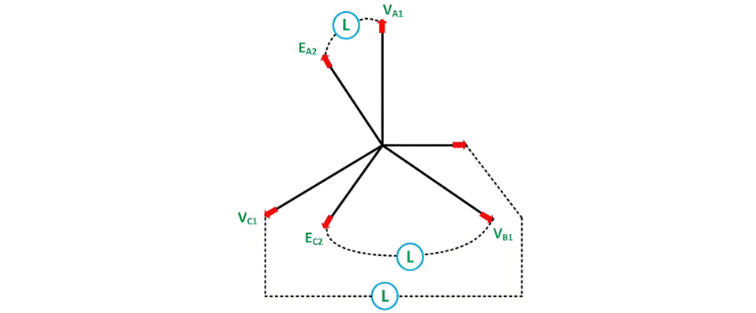
Optimal Switch Closure and Phase Sequence Verification
The ideal moment to close the synchronizing switch occurs when the directly connected lamp (A1-A2) is fully dark while the cross-connected lamps (B1-C2, C1-B2) are equally bright. If the phase sequence is incorrect, this condition will not be met, and all lamps will either remain dark or flicker out of sync.
To correct the phase sequence, swap any two line connections of the incoming machine. Since the dark range of incandescent lamps spans a significant voltage interval (typically 40-60% of rated voltage), a voltmeter (V1) is connected across the directly connected lamp. The switch should be closed when the voltmeter reads zero, indicating minimal voltage difference between the incoming machine and the busbar.
Operational Modes and Automation
Once synchronized, the incoming machine "floats" on the busbar and can begin delivering power as a generator. If the prime mover is disengaged while connected, the machine will operate as a motor, drawing power from the grid.
- Small-Scale Synchronization: In low-power applications, three-lamp methods are often supplemented with a synchroscope to verify frequency matching.
- Large-Scale Automation: For high-capacity generators in power stations, computerized systems execute the entire synchronization process autonomously, ensuring precision and safety.




